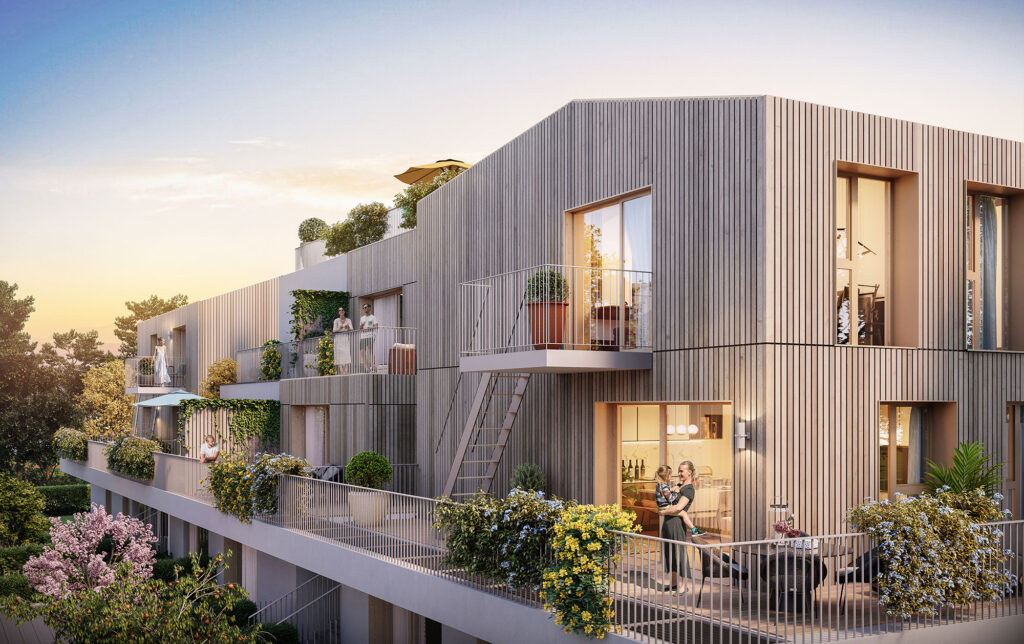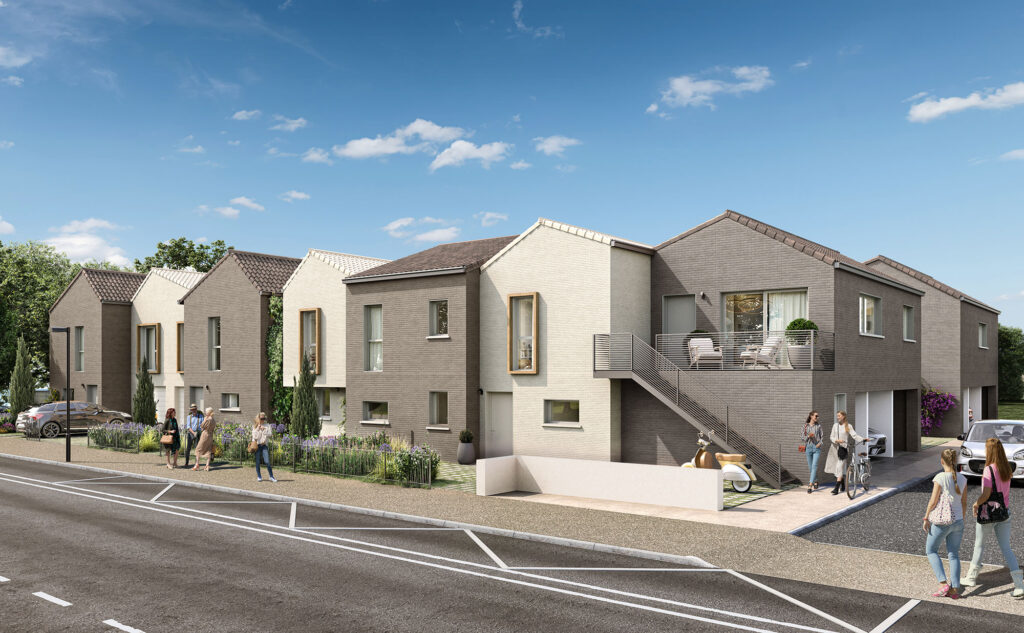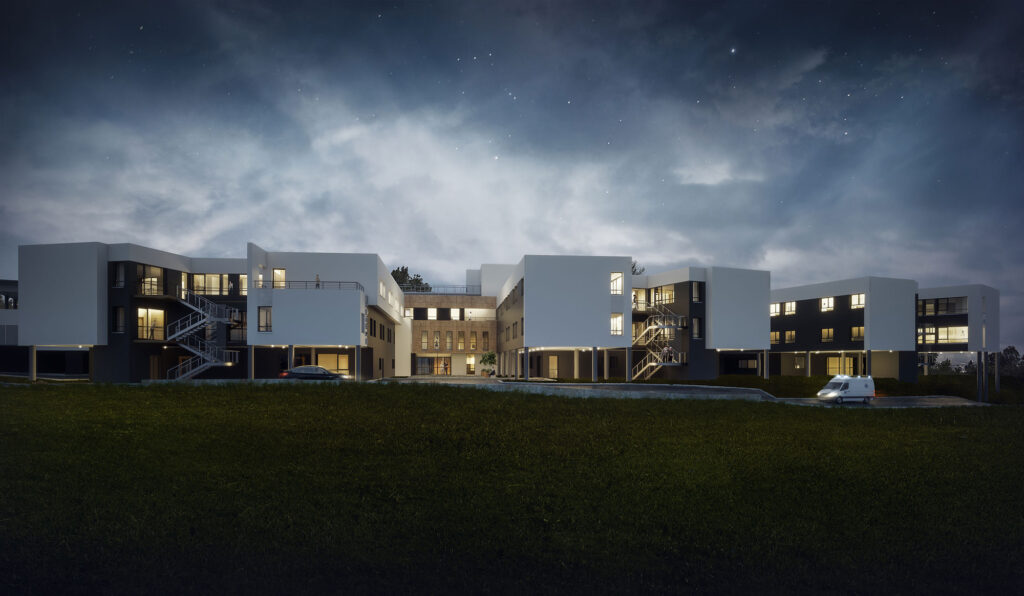3D modeling is increasingly used to present a real estate project to investors, builders and buyers. However, 3D renderings are not effective when they lack realism, present inconsistencies in textures or suffer from slowness.
Defects such as these can be confusing and undermine the credibility of your real estate project. In this article, discover the challenges of texturing and 3D rendering, and how to overcome them to satisfy your target audience.
Realism and consistency of textures in 3D renderings
To achieve high quality 3D rendering, textures must be as realistic as possible and react correctly in their environment.
Details and imperfections
Texturing consists of adding textures to a 3D object to give it relief and make it more realistic. It's a very delicate stage, as it takes a great deal of time to achieve realistic, high-quality 3D renderings. Quality and realism are difficult to achieve if texturing is poorly mastered.
A 3D model of a property without texture shows only the layout of spaces and objects that are difficult to distinguish. To bring this model to life and distinguish the various elements, textures and lighting are essential.
To avoid artificial rendering, textures must be realistic, i.e. faithful to the original material. Textures are considered unrealistic when they fail to faithfully reproduce a real material, or when they lack variation and detail.
To overcome these problems, textures need :
- Microscopic details: these should be clearly visible when zoomed in on an element. They can be the fur on the carpet, the wallpaper on the walls or the material of the furniture.
- Imperfections : real materials are neither uniform nor perfect. By adding subtle variations such as stains or small irregularities, you get as close to realism as possible.
- Realistic colors : colors need to be carefully crafted, particularly in terms of opacity, contrast and gradation.
Reaction to lighting
For a 3D rendering to be realistic, the texturing must be consistent with the lighting. 3D artists and computer graphics designers study light sources at length to ensure that the graphic representation remains realistic.
Applying highlights and shadows is particularly difficult, as textures react differently to their exposure.
To maintain consistency in your 3D visuals, you need to ensure, for example, that the reflections of a TV screen are consistent with the light source. It's therefore important to master the basics of lighting and shadow types, such as ambient, spot and directional lighting.
You also need to master the way these lights affect your scene. By taking these details into account, you can offer your prospects complete immersion.
Choosing texturing techniques for your 3D renderings

The wrong choice of texturing technique remains another challenge to overcome when it comes to 3D visualization. There are several types of texturing techniques, and mastering them can result in hyper-realistic 3D renderings.
UV Mapping
UV Mapping is the technique of applying a texture to a 3D model using a 2D projection. The letters U and V refer to the two axes of a 2D model, while X, Y and Z are the axes of a 3D model.
In practical terms, it's impossible to apply a texture to a 3D model, so it has to be cut into several pieces assembled flat on a 2D plane. This makes it possible to apply a precise texture to each face of the object and avoid textural distortion.
This technique adds subtleties that enrich the appearance and realism of your 3D model.
This texturing technique is ideal for complex 3D objects requiring greater realism. These include book covers, tapestries, character skin and scratches.
UV Mapping requires an in-depth knowledge of 3D meshing and cutting rules to produce highly accurate textures.
Texture painting
Other 3D models simply require color to create texture. Texture painting involves directly painting the surface of a 3D model using digital painting software.
It is generally used to create organic textures or add custom details to 3D models.
Procedural texturing
Procedural texturing uses algorithms to generate random textures or textures based on specific parameters. It determines surface color, shape and pattern. This technique can be used to create background textures and subtle details.
It therefore requires mastery of the various parameters to refine the textures of your 3D rendering. Procedural texturing is ideal for representing natural elements such as wood, metal, marble and stone, or complex, organic effects such as bumps, cracks and noises.
In reality, no one technique is better than another, each having its own advantages and disadvantages. The main challenge for the 3D artist is to make the right choices according to the texture results required.
It's entirely possible to combine various methods to achieve hyper-realistic 3D renderings.
Choice of materials for texturing and 3D rendering
Some 3D renderings fail to achieve their intended visual and artistic objectives due to poor choice of materials. Each material must be carefully selected, whether for interior or exterior rendering.
Interior texture
PBR (Physically Based Rendering) materials are generally used for their realistic properties, but their use must be mastered. When it comes to interior design, the 3D computer graphics designer is called upon to determine the materials :
- Furniture : wood, metal, glass, marble, fabric Cushions;
- Walls : wallpaper, brick effect, simple paint, wood ;
- Floors : parquet, tiles, PVC, carpet, waxed concrete, epoxy resin;
- Ceiling : plaster, wood panelling, PVC, metal;
- Other objects in the 3D model, etc.
The right combination of different textures gives a place personality and awakens the senses of sight and touch to win the heart of your target.
Exterior texture
Exterior 3D renderings use natural-effect textures such as the building's concrete, green spaces, floor finishes, gravel, etc. Lighting must also be considered to ensure the coherence and enhancement of your real estate project.
Error correction and optimization of 3D renderings

3D renderings can suffer from mesh errors and performance problems.
Mesh errors
Mesh errors are a common challenge in 3D modeling. These errors can have repercussions on the texturing and exporting of your 3D models. As a result, you risk obtaining 3D renderings that are inconsistent and full of defects.
Inconsistencies and anomalies must therefore be detected as early as the 3D meshing stage. These faults can be holes, non-variant geometries, overlaps or inverted normals. 3D software generally includes mesh analysis and cleaning tools.
Make sure that your real estate project is correctly represented in your 3D visuals. This will reinforce your credibility as a real estate professional. Your main challenge is to convince your prospects with your 3D renderings.
Performance optimization
In addition to errors, 3D models can suffer from lack of fluidity and lag. This is usually the case with high-resolution models, highly detailed scenes or complex, multi-layered lighting.
To overcome these challenges, 3D computer graphics designers use optimization tools, working on texture size, rendering parameters and polygon count.
To check the quality of your renderings and 3D visualization tools, simply check the detail of the materials, their coherence in the scene and their fluidity when you zoom in or move around.
If you want to invest in professionally textured 3D models, make it a priority to work with professionals.
Let us create your 3D models for maximum impact








